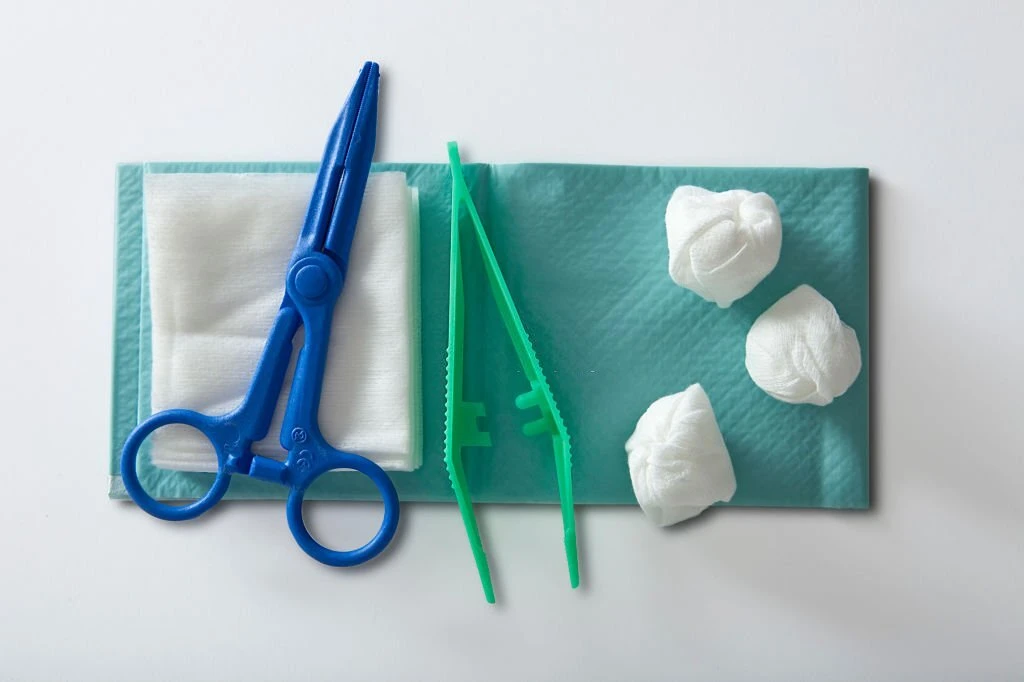Unveiling the Truths: The Optimal Duration for Gauze After Tooth Extraction

Image: dellaterrawellness.com
A Journey Towards Painless Recovery
Undergoing a tooth extraction can evoke a myriad of emotions, ranging from apprehension to relief. While the procedure itself may be completed in a seamless manner, the aftermath requires responsible self-care to ensure a smooth and pain-free recovery. One crucial element of post-extraction care involves the strategic placement of gauze. Embark on an informative exploration as we delve into the intricacies of gauze application, unraveling the optimal duration for its use following a tooth extraction.
Understanding the Role of Gauze
Gauze, a soft, absorbent material, plays a pivotal role in the aftermath of tooth extraction. It serves as a protective barrier, shielding the delicate extraction site from external contaminants, such as food particles or bacteria. Additionally, gauze facilitates blood clot formation within the socket, a crucial step in preventing excessive bleeding and promoting tissue regeneration.
Navigating the Duration Dilemma
Determining the ideal duration for gauze application after tooth extraction requires an understanding of individual healing rates and the type of gauze used. Generally, gauze should be kept in place for 30 to 60 minutes post-extraction. This time frame allows for sufficient clot formation without inducing discomfort or potential complications.
However, certain instances may warrant an extended gauze application period. For instance, individuals taking anticoagulants or experiencing excessive bleeding may be advised to keep the gauze in place for several hours. Conversely, gauze removal can occur sooner if bleeding has significantly subsided and the clot appears stable.
Expert Insights and Time-Tested Tips
Following tooth extraction, it is imperative to seek guidance from a reputable dental professional regarding gauze usage. They will assess your individual situation and provide specific instructions tailored to your recovery needs. Adhering to their recommendations ensures optimal healing outcomes.
Experienced dentists often recommend changing the gauze every few hours to prevent bacteria buildup and promote clot stability. Moreover, avoid rinsing your mouth vigorously during the initial 24 hours after extraction, as this can dislodge the clot and impede healing.
Gentle Nudgings for Painless Recovery
As the hours pass following tooth extraction, pain or discomfort may arise. Alleviating this discomfort is essential for promoting a comfortable recovery. Over-the-counter pain relievers, such as ibuprofen or acetaminophen, can effectively mitigate the pain. Applying a cold compress to the cheek near the extraction site can also provide soothing relief and reduce swelling.
Conclusion: Empowering Choices
Understanding the optimal duration for gauze application after tooth extraction empowers individuals to actively participate in their recovery journey. By adhering to the guidance of dental professionals and embracing informed self-care practices, patients can minimize pain, prevent complications, and foster an environment conducive to rapid healing. Remember, a proper understanding of gauze usage is a testament to the value we place on oral health and a radiant smile.

Image: heritagepointedental.com
How Long To Have Gauze In After Tooth Extraction





:max_bytes(150000):strip_icc()/ideas-for-removing-odors-from-wood-3536463-FINAL-54b76a445dfb41acb4ba0c413bd80e80.png?w=740&resize=740,414&ssl=1)

